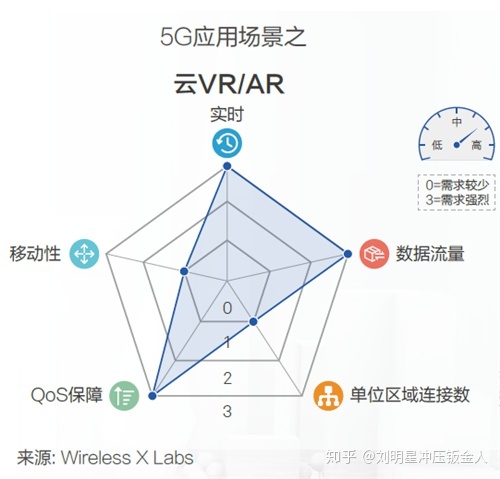5G Edge and Cloud Native Architectures
875 浏览 5 years, 7 months
1.2.3 Immersive entertainment
版权声明: 转载请注明出处 http://www.codingsoho.com/5G networks will be vital for supporting the growing demand for mobile video. But 5G’s unparalleled data capacity, speed and low latency will also help to enable a new breed of immersive entertainment, thanks to technologies like VR and AR.
These technologies are already helping to boost the fan experience in sports and other live events with innovations such as AR games and interactive game day programmes, while VR is helping to recreate the live experience for those at home and on mobile devices. 5G will enable more innovations in this area.
See also: EU to coordinate the connectivity of 5G
https://www.information-age.com/5g-future-123472007/
5G Use Case: VR/AR Gaming 云虚拟现实(VR)与增强现实(AR)
VR/AR 需要大量的数据传输、存储和计算功能,这些数据和计算密集型任务如果转移到云端,就能利用云端服务器的数据存储和高速计算能力。

Massive multiplayer online games (MMOG orMMO) describe video games in which a large number of players interact simultaneously through an internet connected devices. The global MMO market generated $31 billion in 2017 revenue and continues to be a major contributor to both PC and console gaming market. MMOGs include role-playing like World of Warcraft, first-person shooters like Call of Duty, and realtime strategy games. A fast Internet connection is absolutely critical in making these games appealing. As a result, Verizon Fios is specifically marketing its high Internet speeds to gamers through its “Game On” advertising campaign.
Bandwidth and latency requirements will only increase as virtual reality (VR) and augmented reality (AR) technology are integrated into mainstream games. We expect that advanced gaming could be an immediate use case for 5G networks.
Virtual Reality requires substantially more computing power than traditional IP video. VR requires a high frame rate in order for motion within a virtual space to feel natural. While a traditional film will run at 24 frames per- second (FPS), and a video game at 30 FPS, Oculus runs at 90 FPS. In addition, VR visual latency has substantially more downside. In 2D, objects get blurry at lower frame speeds, while any VR lag will contribute to dizziness, sickness and nausea. Today, VR gaming requires expensive hardware which is cost prohibitive for many consumers. Gaming VR equipment requires a customer headset and CPU with a stateof-the-art graphics processor. 5G may offer a solution, as faster speeds could allow for cloud-based (or off-site) processing.
Augmented Reality (AR) seeks to superimpose a computer generated image on a user’s view of the real world. Pokemon Go, the 2016 phenomenon, allowed gamers to use their cell phone’s cameras and location data to search for Pokemon characters projected in the real world. While the Pokemon game was not particularly data intensive, 5G implementation could enable a new generation of AR games. Developers could incorporate multiple players’ locations, geographic data from a service like Google Maps and overlay game objects.
Source: International Business Times; KT